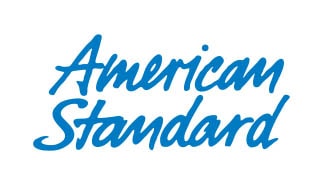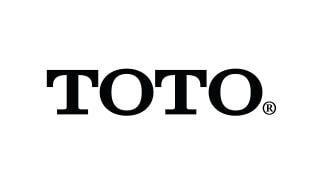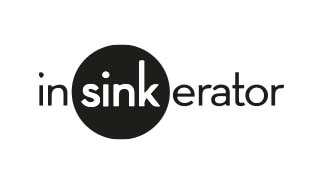Published on
May 11th, 2023Is Plumbing the Same Around the World? How the USA Stacks Up Against Other Countries
Have you ever taken a moment to consider the history and complexity of your property’s plumbing system? Most Americans give little thought to the benefits of modern plumbing, taking it for granted that the turn of a faucet produces fresh, clean water or the press of a handle evacuates waste. Those who travel abroad or who have come to the States have cause to wonder, is plumbing the same around the world? The short answer is no. Discover a few of the many differences between U.S. plumbing and other countries’.
Is Plumbing the Same Around the World?
India’s Indoor Plumbing Limitations
Plumbing codes and modern ideas of indoor plumbing predominantly started as European and American ideas. The use of sanitation systems inside buildings and dwellings began in the U.S. and expanded to Europe. Unfortunately, not all countries — even in modern times — have the infrastructure to support such systems.
Despite being one of the most populous countries in the world, India still lacks sufficient plumbing infrastructure. Over 60% of the country’s population does not have access to indoor plumbing, resulting in the need to defecate outdoors.
Plumbing in India primarily consists of outhouses or constructions of brick-and-mortar holes. Only wealthier parts of the country usually have outhouses. Poorer communities tend to have holes in the ground. While some areas of the country have Western-style toilets, they tend to only appear in the wealthiest areas or tourist-heavy locations.
Many areas of India do not have access to free public restrooms like other parts of the world. Some public locations have pay-to-use outhouses, but cleanliness is a common problem in these facilities.
While India’s problems seem far from U.S. plumbing worries, some New Yorkers wonder if the same toilet problems could happen here. Thankfully, plumbing is not the same around the world, and NYC doesn’t have the infrastructure limitations of India.
With an uptick in certain groups, especially vagrant populations, the availability of public restrooms is an issue in the city, but it is not the same degree of plumbing challenges that India faces.
Complications in Africa
As the second largest continent in the world, Africa has countries with a wide degree of plumbing infrastructure. In particular, many parts of Africa still need access to drinking water. While most of Northern Africa has access to safe, clean water, Sub-Saharan Africa has significantly less — 60% according to a study covering 2005-2015.
In South Africa, residential indoor plumbing is only present in about 60% of urban households. While that number might sound low compared to American standards, Uganda is at only 8%. However, even in the U.S., according to recent reports, over 360,000 U.S. households do not have running water, and over 500,000 lack basic indoor plumbing. Sadly, some of those properties are right here in New York.
Most African villages receive their water supply from groundwater and well systems or rain catchment areas. The catchments offer water supplies during drier times of the year. Some places on the continent also can capitalize on natural springs.
For toilets, Northern Africa has Western-style, sit-down options with sewage systems similar to developed plumbing around the world. Other African countries, however, use squat toilets, and in Sub-Saharan Africa, in many rural areas, toilet facilities are non-existent.
The Infrastructure of China
China is the second most populous country in the world, with over 1.4 billion people. Like India and Africa, China has large underdeveloped regions that need access to sanitation and plumbing infrastructure.
That said, the nation is making strides to improve water supplies and sanitation throughout. From 1990 to 2012, China increased water supplies from 67% to 92% and improved sanitation from 24% to 65%.
However, these improvements may not be happening fast enough. While information from the PRC government is sparse, researchers believe that shifting precipitation patterns and a decade of economic growth have further strained the country’s water supplies. As a global power, any problems in China may affect global food and supply chains.
On the plumbing front, China’s infrastructure is behind that of other developed countries around the world. Americans visiting the country might experience a bit of culture shock when away from their hotel bathrooms, because the restrooms in most public areas consist primarily of squat toilets. You may need to bring your toilet paper, as many restrooms do not supply it.
Similarities and Differences With Europe
Most developed European nations have similar sanitation and supply systems as the U.S. The countries use similar materials and connections, albeit with potential differences in threading, sizing, and usage. The one thing significantly different compared to the U.S. is the European toilet or restroom, which is like Eastern Hemisphere plumbing around the world.
American systems allow for the use of toilet paper. While European systems may allow for toilet tissue, many residential and hotel facilities use bidets. These small basins are about the same size and height as a toilet and have a water supply for rinsing and cleaning your privates, reducing the need for paper waste.
Also, many European toilets use a dual flush system for water conservation. The toilet may have a series of buttons or a single button to control the flushing action. A single push is for flushing liquid waste, and a double push is for solid waste.
Unlike America’s siphonic flushing systems, European plumbing often uses a wash-down system. These systems rely on gravitational pressure and the force of the water to push waste into the sewer or rural septic system.
Why Isn’t Plumbing the Same Around the World?
Appreciating the Availability of Fresh Water and Infrastructure
While many U.S. citizens take plumbing for granted, it is clear that water supplies and sanitation practices worldwide differ. Ancient civilizations contributed to the modernization of plumbing technologies but could not account for all the evolving challenges related to infrastructure and availability of fresh, clean water. Residents of the U.S. and other developed nations are lucky in regard to the effective water and sanitation systems in place.
Working With Professionals Like Sanitary Plumbing
Is plumbing the same around the world? No, it’s not. Many countries struggle to install and maintain the infrastructure the U.S. takes for granted. As a property owner, you must do your part for this system to ensure your tenants have access to clean water and working plumbing. If your building is experiencing problems, please call Sanitary Plumbing at 212-734-5000.








